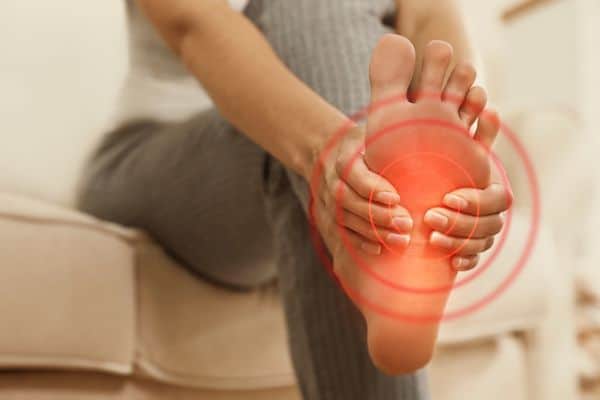The foot is one of the most vulnerable organs in the human body. The main reason for this is the heavy load that is placed on it when it carries all the weight of the body. Another reason is the shocks produced by every encounter with any surface during walking, running, jumping and landing, and in fact, even while standing, different forces act on the sensitive anatomical structures of the feet – and the result may be pain. On this page you will find detailed information about the common causes of foot pain, and more importantly – the recommended treatment methods.
Nerve damage (Morton's neuroma)
One common cause of foot pain is nerve damage. The medical term is Morton's neuroma, and the pain is felt mainly in the third and fourth toes of the feet. Sometimes the initial sensation will be numbness in this area, and over time it will worsen and the numbness will turn into significant pain and a burning sensation at the base of the fingers. The populations most susceptible to Morton's neuroma are women who often wear high heels, runners (both professionals and amateurs), and people with structural foot defects (e.g. platypus).
Spur
"Spur" is the common term for inflammation of the plantar ligament – a wide ligament that connects the heel to the toes, and therefore stretches along the entire length of the soles of the feet. This band also supports a marble arch on each foot. The inflammation is the product of an overload on the ligament, resulting in tiny tears. The inflammation is actually the body's attempt to treat those tears. The most common symptom is a feeling of pain that appears in the first steps in the morning, immediately after getting out of bed. Even after sitting for a long time or standing for a long time, the pain may appear.
Ankle sprain
An ankle sprain is caused by improper movement, and in particular a rapid change of direction that leads to a tear in the ligaments. This is a common sports injury, but it can also occur during daily life. There are relatively mild sprains, in which the ligaments are not torn but "only" stretched, and in these cases the main symptom is not pain but swelling, but they must also be treated immediately.
Professional diagnosis by an experienced doctor
Leg pain can be the result of a variety of factors and circumstances. The treatment must be tailored to the specific cause and the specific area of the foot that was affected, so the most important recommendation is to undergo a professional diagnosis by an experienced doctor. When the level of pain is high and creates limitations in movement, it is better not to risk worsening the situation, but to call a doctor home.
Shock wave therapy
Shock waves provide very effective treatment in cases of spurs. The energy of the acoustic waves breaks down the calcium deposits in the damaged tissue and accelerates the body's natural healing processes. In addition, the shock waves improve blood flow to the affected area and thus relieve pain even during healing.
Insoles
Another good answer to the obvious question How to treat foot pain It is insoles, and in particular insoles that are customized to the person – to the structure of his foot, the nature of his activity and the cause of the pain. High-quality insoles neutralize the harmful effect of structural defects in the feet and make sure that the pressures are distributed correctly – so that there is no specific area that is exposed to overload and the damage it causes.
Dedicated physical exercises
Although in principle it is very important to give the foot a rest when there is pain, at the same time there are also specific exercises that help ease stretching in the ligaments. Another contribution of adapted physical activity is to strengthen the bone density in the feet, and also to improve the position of the foot. It is very important to receive specific instructions from experienced doctors or physiotherapists in order for the exercises to be beneficial and not to worsen the pain.


